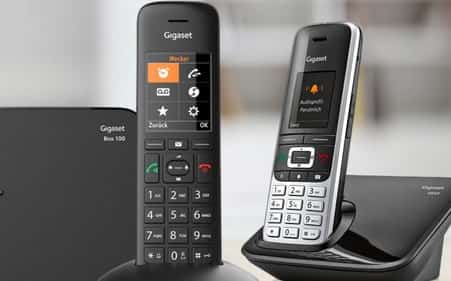DECT phones: an overview of the obvious advantages of this wireless device
 Paul Roberts
17 / January / 22
Visitors: 1715
Paul Roberts
17 / January / 22
Visitors: 1715
Can you still remember your first cordless phone? Maybe you never even had the heart to break up with him? If you frequently use a cordless phone to make calls in your own four walls, it might be worth buying a new one: DECT phones are now available from as little as 50 euros and are bursting with functions. COMPUTER BILD shows an overview of the most popular landline telephones with and without an answering machine.
When was the last time you unraveled a telephone receiver? That was probably in the office, because you've probably been using a cordless phone privately for a long time. When talking, you can use it to wander around the apartment or even in the garden. When the doorbell rings, just reach out—rather than rushing down the hall to a wired phone. The AVM FritzFon C6 is at the forefront. For around 55 euros, you can purchase the DECT telephone with a number memory for 300 entries and a stand-by time of twelve days. The talk time is 16 hours, an answering machine is available. In addition to AVM, a number of other providers are represented in the gallery, including Panasonic and Gigaset.
DECT phones: cordless convenience from 24 euros
Most cordless phones transmit voice data using the digital DECT standard (Digital Enhanced Cordless Telecommunications). At the beginning of the DECT era, this was pure luxury - and luxury has its price. Today, wireless landline phones are affordable. In the overview of the most popular DECT telephones, the cheapest devices are just 24 euros. The Gigaset A415, for example, is limited to a monochrome display. The range is usually 50 meters indoors and up to 300 meters outdoors. With all the freedom, the question may arise: Where did I leave the handset? Don't worry: You'll find the phone in no time at all - many devices have a paging button on the base that you can use to ring the phone.
DECT telephones: answering machine, telephone book, VoIP
Many devices have a baby monitor function and an answering machine that saves between ten and 55 minutes depending on the quality and memory. The handset usually manages 100 to 300 contacts, the base can sometimes handle six to eight handsets. The continuous talk time is usually more than ten hours and the standby time is typically 100 to 320 hours. In addition to the digital DECT standard, there are wireless analog transmission types that have been strictly forbidden since 2009; Of course, this does not apply to analog fixed line connections. With VoIP (Voice over IP) telephony, the signal is transmitted over the Internet. You can get details about the landline phones in the photo series above by clicking on the link under the devices - it opens the corresponding product page.
DECT phones: low-radiation landline phones
Even if there is no solid evidence of health damage from DECT radiation, many users attach importance to reducing the radiation. There are two ways to do this, depending on the situation:
Radiation from the handset (when on the phone): When you are not on the phone, the handset does not emit any radiation. Activate Eco mode to minimize radiation when making phone calls. This reduces the transmission power by around 20 percent. The poorer reception should be sufficient in normal apartments, while it may be clearly noticeable in large buildings or outdoors.
Base station radiation (standby): Normally, the base station is always transmitting, even if you are not on the phone. If you activate the “Eco Mode+” (or “Full Eco”) in the DECT base, the latter switches off all radiation when it is on standby. DECT is only activated again and the base wakes up with the first incoming ring. First disadvantage: the base swallows the first ring, which cannot be heard. Second disadvantage: There is no warning if you leave the reception area with the handset in standby.
Register DECT phones directly on the router
Many WLAN routers already have a DECT base, such as the AVM FritzBox models from the 6000 and 7000 series, as well as Telekom Speedport and Vodafone Easybox models. If you wish, you can register DECT handsets directly on these devices. Advantage: You no longer need a base, which reduces cable clutter and power consumption. In some cases, you also get convenience functions and switch off the WLAN in the FritzBox with the DECT telephone, for example, or access a central telephone book in the router. This works on the FritzBox with all FritzFon handsets and newer Gigaset phones. The Gigaset HX handsets are specially optimized for routers: You get access to the FritzBox menu (including the call list and phone book) and use convenience functions on the Telekom Speedport and DECT-enabled routers from TP-Link and other routers with the CAT-iq standard . In principle, any DECT handset can be used with any DECT router, although comfort functions are not always available. And: Logging into the router only makes sense if the handset has a separate charging cradle without a DECT base (as with Gigaset HX and Fritz phones). Practical: On the Gigaset homepage you can check which functions are available with different combinations of base station or DECT router and Gigaset telephone - routers from AVM, O2, TP-Link and Telekom can even be selected.
We have compiled a complete Bad Reputation Brokers.

Paul Roberts
Paul Roberts 51 years old Born in Edinburgh. Married. Studied at University of Oxford, Department of Public Policy and Social Work. Graduated in 1997. Works at Standard Life Aberdeen plc.






